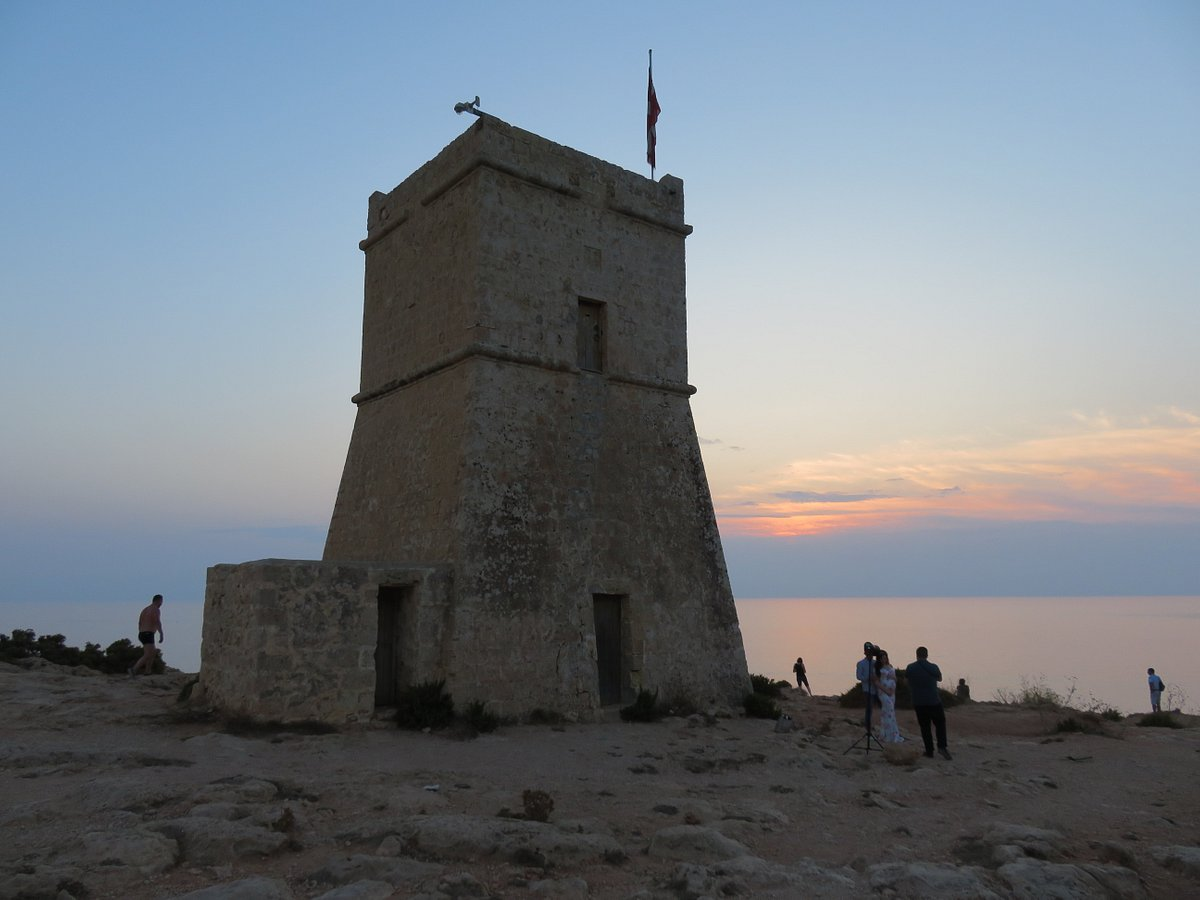Ghajn Hadid Tower
Ghajn Hadid Tower was the first tower to be built in the series of towers erected by Grand Master Martino de Redin. His idea of building a chain of coastal towers goes back to the period when he was President of the Sicilian kingdom in mid 17th century. In fact he was in Sicily when he received the news that he was elected Grand Master of the Order of St. John. It was the large building scheme of coastal defensive structures in Sicily in the late 16th century and the first six decades of the 17th century that influenced him to build a chain of coastal towers in Malta too.
This tower was the third one to be built in Mellieha, but the first one to be built by Grand Master de Redin. The total cost of Ghajn Hadid Tower was 529 scudi, 2 tari u 8 uqija. It was built in 1658 and was manned by a captain and three men paid by the Universita of Imdina. The captain was paid 2½ scudi a month while the men were paid 2 scudi.1 Its design was similar to that of Wied iz-Zurrieq Tower. Internally the tower had two rooms one built on top of the other. In front of the tower, a few metres away, there is a blockhouse. The blockhouse had a number of musketry loopholes to cover the area between itself and the tower.

In the vicinity of the tower there were a number of fields enclosed by rubble walls which were used by the garrison to plant vegetables and for breeding livestock for their livelihood.2 Unfortunately, the upper room of the tower was destroyed by an earthquake in 1856. Till 1856, a 6-pdr cannon was still mounted on the roof. The cannon together with the Latin inscription, that was a few centimeters above the door are nowadays found at Tas-Salib Garden, Mellieha. The inscription says:
FR.D.MARTINVS DE REDIN MAGNO S.R.H. MAGISTRO SEXTAM SPEULAM. PRO GARINARVM. AC INCOLARVM TUTIORI STATIONE, ERIGENTI, MELITEN S. POPVLVS PRINCIPI SVO CLEMENT PRO. VT IN CORDE. SIC IN L…RIDE GRATES DEBITAS REDDEBAT AN. 1658.
References:
1 Vincent Zammit. “Fortifikazzjonijiet fit-Tramuntana ta’ Malta matul il-perjodu ta’ l-Ordni ta’ San Gwann”, J. Catania, E.A. Muscat, J. Cauchi & C. Attard (eds), Parrocca- Maria Bambina Mellieha 1987, Printwell ltd, Malta, p 30.
2 Stephen Spiteri. Fortresses of the Cross: Hospitaller Military Architecture (1136-1798), A Heritage Interpretation Services Publication, Malta, 1994, p 496.
3 Zammit, op cit.
4 Spiteri, op cit, 516
Researched and Written by: Charles Debono B.A.(Hons) History